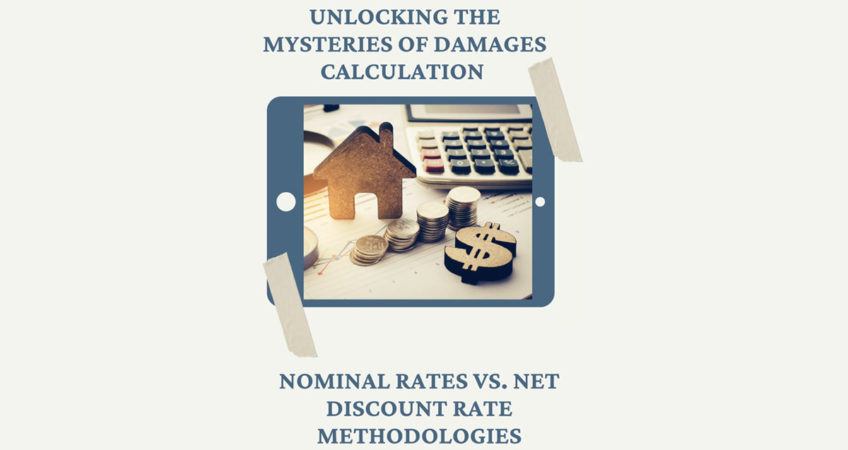
Unlocking the Mysteries of Damages Calculation: Nominal Rates vs. Net Discount Rate Methodologies
In the realm of forensic economics, calculating damages is a nuanced and intricate task. Forensic economists play a pivotal role in quantifying the economic impact of various factors in legal cases. Two primary methodologies employed in this field are the Nominal Rates Method and the Net Discount Rate Method. While both the Nominal Rates Method and the Net Discount Rate Method serve the purpose of calculating damages, they differ significantly in their approach and accuracy. Understanding the differences between these approaches is essential for comprehending the complexities of damages calculation.
Nominal Rates Method: Precision through Present Value
The Nominal Rates Method, esteemed as a robust and precise approach, has garnered widespread acceptance among expert economists. In this method, a stream of income is projected based on a growth rate thoughtfully determined by the forensic economist. Subsequently, this income stream is discounted using the most current interest rates. The brilliance of this approach lies in its ability to provide the Plaintiff with the most accurate present value figure, as it incorporates the prevailing interest rates into the discount rate.
In practice, forensic economists rely on historical data, financial indicators, and expert analysis to establish a suitable growth rate. This rate reflects the expected growth in earnings or losses over time. The methodology then combines this growth rate with current interest rates, offering a present value that faithfully represents the economic reality.
The Flaws of the Net Discount Rate Method
In contrast, the Net Discount Rate Method relies on historical differences between growth rates and interest rates to calculate damages. While this methodology has its place, it introduces inherent challenges, particularly during periods when interest rates deviate significantly from historical norms.
One notable example is the period spanning from 2010 to 2020, during which interest rates remained exceptionally low. The Net Discount Rate Method, anchored in historical norms, struggled to accurately calculate the present value of damages awards during this time. This discrepancy arose because the method did not effectively account for the unique financial landscape characterized by extraordinarily low interest rates.
The Triumph of Accuracy
The Nominal Rates Method emerges as the favored choice among expert economists for several compelling reasons:
Precision: By utilizing current interest rates, the Nominal Rates Method delivers precise and up-to-date present value figures, aligning with the economic reality at the time of calculation.
Adaptability: This methodology is adaptable to a wide range of cases and financial conditions, making it a versatile tool in the hands of forensic economists.
Clarity: The Nominal Rates Method provides transparency and clarity, simplifying the damages calculation process and reducing the risk of discrepancies.
In conclusion, the Nominal Rates Method’s precision, adaptability, and transparency make it the preferred approach for many expert economists in the realm of forensic economics. Its ability to accurately reflect current economic conditions through the use of current interest rates sets it apart, ensuring that justice is served, and equitable compensation is awarded in legal cases. Understanding the significance of this methodology is vital for both forensic economists and those seeking their expertise in the intricate field of damages calculation.
